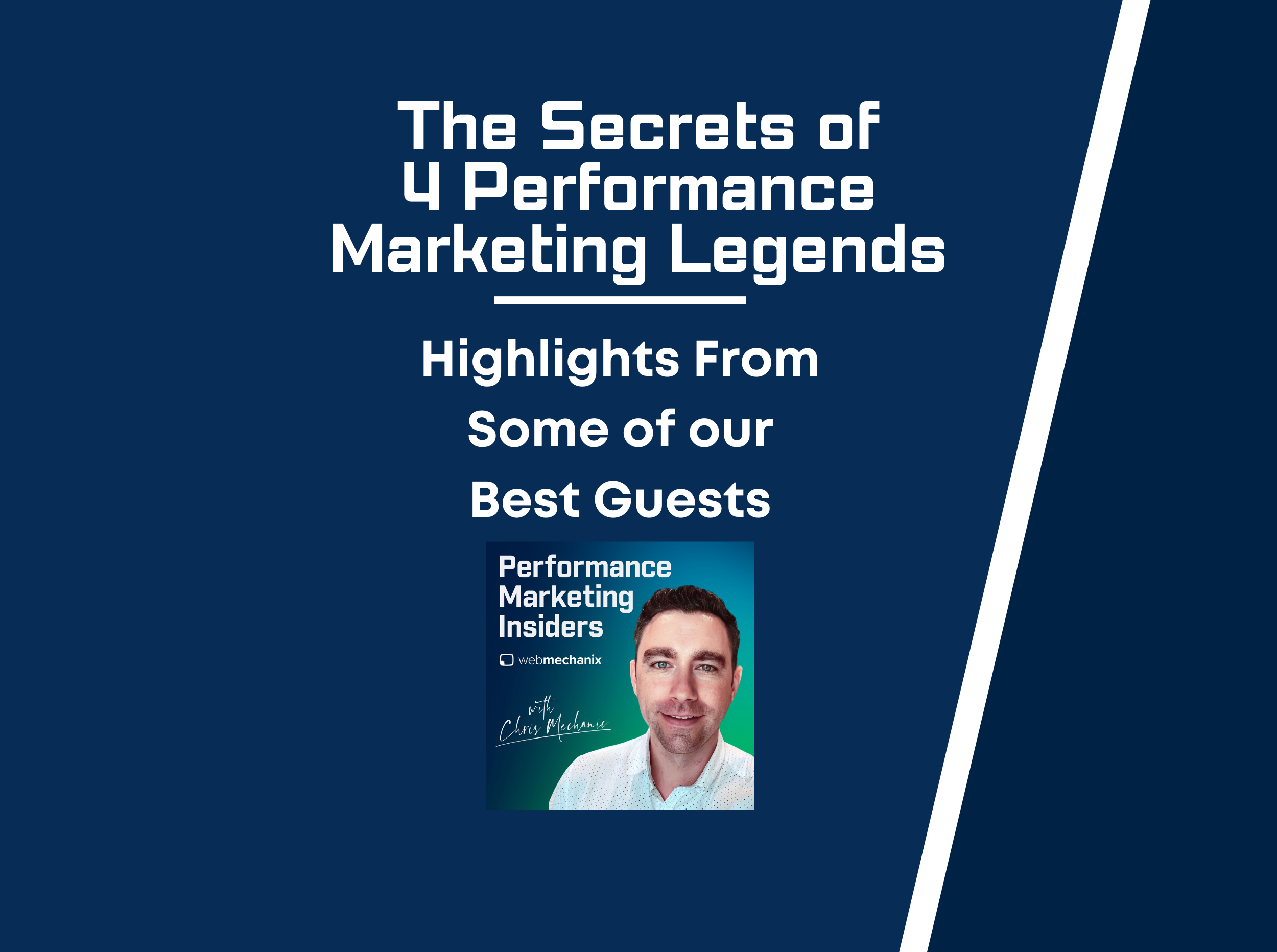Today’s guest is a master of data science, marketing & adtech — and a performance-focused digital marketer that specializes in paid search.
Curtis Correll is the Director of the Performance Marketing Innovation Team at HealthCare.com. Curtis shares why Google and Meta are removing features from their ad platforms, why marketers need to feed data back into Google to see great results, and how to stop seams from appearing in your data.
Book a 30 minute call
Reserve 30 minutes with a strategist and get 30 hours worth of value.
Takeaways:
- Ad platforms like Google are trying to automate parts of digital marketers’ jobs, but that’s not necessarily a bad thing for them. Google has taken away a lot of the granular nuances that used to be the key to digital marketing success.
- There are two main groups of thought toward Google’s automation, the first trusts the platform’s suggestions and the second is wary of any loss of control. Generally, newer marketers are in the first camp while experienced marketers fall into the latter.
- Google’s updates provide benefits for both groups. Veteran marketers should take advantage of some of the automation that Google is implementing while still finetuning their campaigns for their specific businesses. New marketers get the guardrails.
- Ad platforms like Google and Meta are putting an emphasis on companies to go broad with their advertising. To get the most from these platforms, you need to give these platforms more granular guardrails for your ads.
- Google and Meta have lots of great tools for marketers but they don’t have the context from your specific company that is needed to optimize their performance. Feed that contextual data back into the platforms to avoid increasing any seams in your data.
- For example, Healthcare.com sells leads and those leads perform better when salespeople are taking calls during business hours. If a lead loses 60% of its value after 6 PM, a seam appears because Google doesn’t know about the cutoff.
- A great way for marketers to optimize ROAS is to partner with data scientists and build out a lead-scoring system that can calculate the probability of conversion and can associate that with the click. This helps give Google real-time feedback.
Quote of the show:
“Google, Facebook, and all of the other ad marketplaces are trying to automate your job away, and that’s a good thing” – Curtis Correll
Links:
- LinkedIn:https://www.linkedin.com/in/curtiscorrell/
- Company website:https://www.healthcare.com/
- HealthCare Pharmacy:https://pharmacy.healthcare.com/
Shout Outs:
- Cal Newport
- Shadow Diversby Robert Kurson
- The 4-Hour Workweekby Tim Ferriss
Ways to tune in:
- Amazon Music:https://music.amazon.com/podcasts/5f9c8c1a-fbf5-43c7-b7eb-958674860156/3-minute-marketing-with-chris-mechanic
- Apple Podcast:https://podcasts.apple.com/us/podcast/3-minute-marketing-with-chris-mechanic/id1444680950
- Spotify:https://open.spotify.com/show/1OCuYchAG8TlGv82YARRhy?si=c4050290cbb54c65
- Google Podcast:https://podcasts.google.com/feed/aHR0cHM6Ly9tb3JlbWFya2V0aW5nLmxpYnN5bi5jb20vcnNz
- Listen Notes:https://www.listennotes.com/podcasts/3-minute-marketing-with-chris-mechanic-rdU1oESluqs/
- YouTube:https://youtu.be/yrHEaYUfki0
Featuring:

Curtis CorrellDirector of Performance Marketing Innovation, HealthCare.com

Chris MechanicCEO & Co-Founder
Podcasts Info:
Categories:
MarketingMost newsletters suck...
So while we technically have to call this a daily newsletter so people know what it is, it's anything but.
You won't find any 'industry standards' or 'guru best practices' here - only the real stuff that actually moves the needle.






